Results 6,321 to 6,330 of 12096
Thread: Anandtech News
-
09-19-16, 07:00 PM #6321
Anandtech: ARM Announces the Cortex-R52 CPU: Deterministic & Safe, For ADAS & More
Though it didn’t attract a ton of attention at the time, back in 2013 ARM announced the ARMv8-R architecture. An update for ARM’s architecture for real-time CPUs, ARMv8-R was developed to further the real-time platform by adding support for newer features such as virtualization and memory protection. At the time the company didn’t announce any specific CPU designs for the architecture, but rather just announced the architecture on its own.
Now just under 3 years later, ARM is announcing their first ARMv8-R CPU design this evening with the Cortex-R52. An upgrade of sorts to ARM’s existing Cortex-R5, the R52 is the company’s first implementation of ARMv8-R. R52 makes specific use of many of the new features enabled by the architecture, while improving performance at the same time. ARM is pitching the new CPU core at markets that need a safety-critical CPU – a market that the Cortex-R series has been in for a while – where the deterministic nature of the CPU’s execution model is critical to ensuring quick and accurate execution.
While the focus on today’s CPU design announcement is on functionality and utility over microarchitecture, ARM has revealed a bit about how the Cortex-R52 is organized under the hood. The microarchitecture is a direct evolution of the previous Cortex-R5. This means we’re looking at a dual-issue in-order execution pipeline, with a pipeline length of 8 stages. Broadly speaking, this description is very similar to that of the better-known Cortex-A7/A53 cores, which implies that this is a real-time optimized version of the basic elements in that design.
As the Cortex-R series is focused on determinism and real-time responsiveness over total performance, ARM doesn’t heavily promote these cores on the basis of performance. But at least within the Cortex-R family, they are talking about a performance increase of upwards of 35% in common CPU benchmarks. More important for this market than throughput however is responsiveness: for the R52, ARM has done some specific work to improve interrupt entry and context switching performance, doubling the former and achieving a staggering 14-fold increase on the latter.
The big deal here of course is the deterministic nature of the CPU. The entire microarchitecture is optimized to avoid variable time, non-deterministic operations, which is why it’s an in-order processor to begin with. This design extends to how memory is managed as well, with ARM avoiding a virtual memory system and its associated TLB translation-misses in favor of a model they call the Protected System Memory Architecture (PSMA), which is used in conjunction with an MPU to handle memory operations without the translation.
On the safety side of matters, the R52 has a few different error-resiliency features to ensure accuracy. Multi-core lock step returns for this design, allowing two R52 cores to execute the same task in parallel for redundancy. And on the memory side of matters, ECC is offered across both the memory busses and the memory itself, in order to avoid random bitflips.
Meanwhile in terms of new functionality for hardware developers, as part of ARMv8-R, Cortex-R52 implements support for hardware virtualization. Like virtually everything else in R52, this is deterministic as well, with the hypervisor working with the MPU to offer each guest OS its own section of the physical memory space. According to ARM this is a particularly important advancement, as previous means of separating tasks on real-time CPUs were non-deterministic, which is an obvious problem for the target market.
The significance of virtualization in a real-time processor is that it allows for multiple tasks to be executed on the R52 without interfering with each other. In large, complex devices (e.g. cars), this allows for fewer processors within the device, as these tasks can be consolidated onto a smaller number of processors. At the same time, the rigid separation between the tasks means that it’s possible to run both safety-critical and non-critical (but still real-time) tasks on an R52 together, knowing that the latter will not interrupt the safety-critical tasks. For cars and other devices where there is stringent safety certification, this is especially useful as it means that other tasks can be added (via their own guest OS) without invalidating the certifications of the safety-critical tasks.
This is also why ARM’s earlier context switching and interrupt entry improvements are so important. With a hypervisor now in play and multiple tasks executing on a single processor, the vastly improved ability to switch between tasks is critical for allowing multi-tasking without a major performance hit from context switching overhead.
Finally, for the potential market for the Cortex-R52, ARM is pushing the big three traditional markets for real-time and safety-critical processors; automotive, industrial, and medical. All three of these make significant use of real-time functionality, and there’s also a great deal of overlap on safety as well.
ARM is particular interested in the Advanced Driver Assistance Systems (ADAS) market, where the Cortex-R is part of a full system of ARM IP. A full ADAS setup from start to end would utilize all three processor types – M, R, and A – with the Cortex-R handling the real-time decision making and executing on those decisions, while Cortex-A would be used to handle sensor perception/interpretation, and Cortex-M would be in many of the individual sensors.
Wrapping things up, as with most other ARM IP announcements, the announcement of the Cortex-R52 is setting the stage for future products. ARM isn’t talking about specific customers at this time, but they already have a number of companies who have licensed ARMv8-R and will be in need of a CPU design to go with it. To that end, we should be seeing Cortex-R52 start appearing under the hood of various devices in the coming years.
More...
-
09-20-16, 02:56 AM #6322
Anandtech: HTC Announces Desire 10 Pro and Desire 10 Lifestyle
As the holidays approach, OEMs often refresh their device portfolio to make sure that they put their best foot forward as a significant proportion of sales occur towards the end of the year. Today HTC is refreshing their mid-range with the Desire 10. The Desire 10 Pro is the higher-end variant and fits somewhere around the Desire 830, while the Desire 10 Lifestyle is closer to something like the Desire 826. To see what I mean we can take a look at the specs below.
For the most part the Desire 10s are both mainly interesting due to the use of stereo external speakers similar to the HTC 10. HTC is also claiming similar levels of sound quality on the 3.5mm output which is likely to differentiate it from competitors on the market. The Desire 10 Pro uses a MediaTek Helio P10 SoC which should be ok if it’s below 300 USD, but the Desire 10 Lifestyle is targeted to be somewhere around 250 GBP with a Snapdragon 400 which doesn’t really seem to be enough SoC for the target price. The Desire 10 Pro is going to be more expensive than that, which suggests that the value proposition is not necessarily there.HTC Desire 10 Lifestyle HTC Desire 10 Pro SoC Qualcomm Snapdragon 400
4x A7 1.6 GHzMediaTek Helio P10
8x A53RAM 2/3GB 3/4GB NAND 16/32GB NAND + microSD 32/64GB NAND + microSD Display 5.5” 720p
Super LCD5.5” 1080p
IPSNetwork 2G / 3G / 4G LTE (Category 4 LTE) 2G / 3G / 4G LTE (Category 6 LTE) Dimensions 156.9 x 76.9 x 7.7mm, 155g 156.5 x 76 x 7.86mm, 165g Camera 13MP Rear Facing f/2.2 20MP Rear Facing f/2.2, 1.12µm, 1/2.4" (Toshiba T4KA7) 5MP Front Facing, f/2.2 13MP Front Facing, f/2.2 Battery 2700 mAh (10.4 Whr) 3000 mAh (11.55 Whr) OS Android 6 w/ HTC Sense
(At Launch)Android 6 w/ HTC Sense
(At Launch)Connectivity 802.11b/g/n
BT 4.1
USB2.0, GPS/GLONASS802.11a/b/g/n,
BT 4.2,
USB2.0, GPS/GLONASSFingerprint Sensor N/A Capacitive
Putting aside value for SoC, HTC is attempting to differentiate with the use of better audio, better design, and things like laser autofocus for the camera. With the audio experience, design, and AF system of the HTC 10 put in this mid-range device HTC is hoping to remain competitive against stiff competition from OEMs like Huawei and Xiaomi. The Desire 10 Lifestyle will be available by the end of September, and the Desire 10 Pro will be available in October. They will be available in Stone Black, Polar White, Royal Blue, and Valentine Lux.
More...
-
09-20-16, 04:21 AM #6323
Anandtech: Western Digital Shows Off Prototype 1TB SDXC Card at Photokina 2016
In recent years we have seen the development of 3D NAND push up the capacity and push down the prices of all sorts of flash devices, from SSDs to phones, and everything in between. Due to startup cost and longevity needs, we’ve seen 3D NAND focused primarily on permanent storage so far, but it looks like that is soon going to change, and 3D NAND will more widely make its way to removable storage.
This morning at the Photokina trade show in Germany, Western Digital is demonstrating a prototype 1TB SDXC card. This comes just 2 years after the previously-SanDisk portion of the company first demoed a 512GB prototype back at the show in 2014, meaning the new 1TB card comes more or less right on schedule with the breakneck pace of the NAND industry. More importantly, to our knowledge this is the first time that a 1TB SDXC has been shown off in any capacity. And while it’s clearly a prototype – Western Digital isn’t talking about when it’s going to ship – that day will be sooner than later.
At the moment Western Digital isn’t saying too much about the card, and its presence at Photokina is primarily to show off that they can now make such a card. The card is being related under the SanDisk Extreme Pro brand, but performance figures aren’t being published at this time. We have however received confirmation that the card is internally composed of 32 NAND dies, which means we’re looking at a 32 x 256Gbit configuration. So although Western Digital is not saying so at this time, the card is almost assuredly using the company’s jointly developed 256Gbit 48 layer “BiCS” 3D NAND, or a newer incarnation thereof. In fact 1TB is the first SDXC capacity that would require 3D NAND, as 512GB cards could be build using 128Gbit planar dies.
Overall, Western Digital is pitching the new SDXC card at the photography and videography markets. In the case of the latter in particular, the company believes that the increasing use of 4K and 8K recording will drive greater storage requirements.
More...
-
09-20-16, 11:53 PM #6324
Anandtech: Samsung Announces 960 PRO And 960 EVO M.2 PCIe SSDs
At Samsung's SSD Global Summit in South Korea, they've just officially unveiled their next generation of M.2 PCIe SSDs. The new 960 PRO SSD is the successor to the 950 PRO, launched at last year's Summit as Samsung's first M.2 PCIe SSD for the retail market. The new 960 EVO introduces a more affordable option based on TLC NAND flash.
Samsung's early M.2 PCIe SSDs were officially OEM-only products. The XP941 was one of the first PCIe SSDs designed for client computing use and used the AHCI protocol that is standard for SATA controllers rather than the newer NVMe protocol. The next generation consisted of the SM951 and PM951 SSDs, which adopted a new controller that supports PCIe 3.0 x4 operation and provides NVMe support as an option. The 950 PRO uses the same controller as the SM951 but introduced Samsung's 3D V-NAND to the product family for the first time.
Earlier this year, Samsung released a new generation of OEM M.2 PCIe SSDs: the SM961 and PM961. These brought V-NAND to the OEM side of the family and introduced a new Samsung "Polaris" SSD controller that allowed for substantial performance improvements. Availability of the SM961 and PM961 through unofficial retail distributors has been extremely limited, but given their performance, demand has been high. The 960 PRO and 960 EVO are Samsung's answer.
The 960 PRO is clearly more than just a retail branded edition of the SM961. The largest capacity will be 2TB, compared to 1TB for the SM961 and 512GB for the 950 PRO, and the smallest capacity will be 512GB. The 950 PRO never bothered with a 128GB capacity, and with the addition of the 960 EVO to the lineup, Samsung is most likely retiring the 256GB capacity due to performance limitations. Sequential transfer speeds are significantly higher while random access speeds are slightly lower. Additionally, the 960 PRO shows a power rating of 1.0A at 3.3V, compared to 2.4-2.7A for Samsung's previous M.2 PCIe SSDs. Such a big decrease in maximum power draw is sure to translate to significant savings even in ordinary usage. Unfortunately, the warranty is still the 5 years offered on the 950 PRO rather than the 10 years offered for the 850 PRO.Samsung SSD Comparison 960 PRO 960 EVO SM961 PM961 950 Pro SM951-NVMe PM951-NVMe Form Factor M.2 2280 Controller Samsung Polaris Samsung Polaris Samsung UBX unknown Interface PCIe 3.0 x4 Protocol NVMe NAND Samsung 48-layer MLC V-NAND Samsung 48-layer TLC V-NAND Samsung
48-layer MLC V-NANDSamsung
48-layer TLC V-NANDSamsung 32-layer MLC V-NAND Samsung 16nm 64Gbit MLC Samsung TLC NAND flash Capacity 512GB, 1TB, 2TB 250GB, 500GB, 1TB 128GB, 256GB, 512GB, 1TB 128GB, 256GB, 512GB, 1TB 256GB, 512GB 128GB, 256GB, 512GB 128GB, 256GB, 512GB Sequential Read 3500 MB/s 3200 MB/s 3200 MB/s 3000 MB/s 2500 MB/s 2150 MB/s 1050 MB/s Sequential Write 2100 MB/s 1900 MB/s 1800 MB/s 1150 MB/s 1500 MB/s 1550 MB/s 560 MB/s 4KB Random Read (QD32) 440k IOPS 380k IOPS 450k IOPS 360k IOPS 300k IOPS 300k IOPS 250k IOPS 4KB Random Write (QD32) 360k IOPS 360k IOPS 400k IOPS 280k IOPS 110k IOPS 100k IOPS 144k IOPS Launch Date 2016 2016 2H 2016 October 2015 ~June 2015 2015
As with the 960 PRO, the 960 EVO differs from its OEM counterpart. The capacities are the slightly lower 250GB-1000GB typical of Samsung's EVO SSDs rather than the power of two capacity points used on the PRO and OEM products. Peak sequential write speed is substantially higher than the PM961 and even exceeds the 950 PRO, thanks in part to Samsung's new generation SLC caching technology branded "Intelligent TurboWrite". The rest of the performance specifications are slightly higher than the PM961. There's no 2TB option, but this is purely a business decision rather than a technical limitation.Samsung 960 PRO Specifications Comparison 960 PRO 2TB 960 PRO 1TB 960 PRO 512GB 950 PRO
512GB950 PRO
256GBForm Factor single-sided M.2 2280 single-sided M.2 2280 Controller Samsung Polaris Samsung UBX Interface PCIe 3.0 x4 NAND Samsung 48-layer MLC V-NAND Samsung V-NAND 32-layer 128Gbit MLC Sequential Read 3500 MB/s TBA TBA 2,500MB/s 2,200MB/s Sequential Write 2100 MB/s TBA TBA 1500MB/s 900MB/s 4KB Random Read (QD32) 440k IOPS TBA TBA 300k IOPS 270k IOPS 4KB Random Write (QD32) 360k IOPS TBA TBA 110k IOPS 85k IOPS Power 3.3W (peak) TBA TBA 7.0W (burst)
5.7W (average)
1.7W (idle)6.4W (burst)
5.1 (average)
1.7W (idle)Endurance 1200TB TBA TBA 400TB 200TB Warranty 5 Year 5 Year Launch MSRP TBA TBA $329.99 $350 $200
Samsung has had a bit of a rough year with the transition to their 48-layer V-NAND: the promised 1TB 950 PRO never materialized and other products using the 48-layer V-NAND have been late or also failed to show up. Fortunately, Samsung's SSD controller technology hasn't faltered and their competitors have been slow to catch up. With the launch of the 960 PRO and 960 EVO, Samsung is putting most of those troubles behind them and they will probably resume dominating the SSD market while making it look easy.Samsung 960 EVO Specifications Comparison 960 EVO 1TB 960 EVO 500GB 960 EVO 250GB 950 PRO
512GB950 PRO
256GBForm Factor single-sided M.2 2280 single-sided M.2 2280 Controller Samsung Polaris Samsung UBX Interface PCIe 3.0 x4 NAND Samsung 48-layer TLC V-NAND Samsung V-NAND 32-layer 128Gbit MLC Sequential Read 3200 MB/s TBA TBA 2,500MB/s 2,200MB/s Sequential Write (SLC Cache) 1900 MB/s TBA TBA 1500MB/s 900MB/s Sequential Write (sustained) 1200 MB/s 600 MB/s 300 MB/s N/A N/A 4KB Random Read (QD32) 380k IOPS TBA TBA 300k IOPS 270k IOPS 4KB Random Write (QD32) 360k IOPS TBA TBA 110k IOPS 85k IOPS Power 8.6 W (peak) TBA TBA 7.0W (burst)
5.7W (average)
1.7W (idle)6.4W (burst)
5.1 (average)
1.7W (idle)Endurance 400 TB TBA TBA 400TB 200TB Warranty 3 Year 5 Year Launch MSRP TBA TBA $129.88 $350 $200
More...
-
09-21-16, 07:26 AM #6325
Anandtech: GIGABYTE GB-BSi7HAL-6500 Dual LAN Skylake BRIX Review
Ultra-compact form factor (UCFF) PCs have become quite popular after Intel introduced the NUCs. They have become powerful enough to be the primary computing platform for many households. However, consumers looking for UCFF PCs for specialized applications and industrial usage have been contending with high prices and lack of suitable options. GIGABYTE's BRIX family has emerged over the last several years as an alternative to the Intel NUCs. With Skylake-U, GIGABYTE's BRIX family has expanded with multiple options catering to various market segments. Today, we are going to take a look at the GB-BSi7HAL-6500, a BRIX with two gigabit LAN ports.
More...
-
09-21-16, 08:34 AM #6326
Anandtech: NVIDIA Announces Gears of War 4 Game Bundle for GTX 1080 and 1070
As we enter the AAA blockbuster season and leave the avalanche of GPU releases behind us, we are beginning to see the first game bundles approach. Those considering an upgrade, but perhaps not quite convinced thus far, may see an enticing offer sway them over in these coming months.
Kicking off this week is a new bundle for high-end cards that will see Microsoft's upcoming Gears of War 4 bundled with GeForce GTX 1070 and 1080 graphics cards, including notebook variations thereof. Interestingly, this title is one of Microsoft's first AAA "Xbox Play Anywhere" games, which means purchasing (or in this case, receiving) a game allows it to be played on either the PC or the Xbox One. Along these lines, the game is receiving a simultaneous launch on both platforms on October 11th, nearly 10 years after the original's Xbox 360 release.
Interesting features here will be cross-platform online campaign co-op, cross-platform online Horde mode gameplay and platform specific competitive multiplayer. Of course it is worth noting the PC version provides enhanced graphics and supports 4K and 21:9 resolutions. Along with this we have the usual gamut of graphics options we’ve become accustomed to such as lighting, Anti-Aliasing, and texture settings with GeForce Experience available for those who don’t want to tinker.
It's worth noting that Microsoft's official "recommended" spec calls for either the GeForce GTX 1060 or the Radeon RX 480, which NVIDIA says is good for 1440p. Meanwhile for those gamers receiving the game as part of the GeForce bundle, the GTX 1070 meets Microsoft's "ideal" (4K) specification, and the GTX 1070 won't be far behind. Otherwise, as is usually the case, this bundle isn't being extended to the top-tier Titan X Pascal, nor is NVIDIA running any bundles with the GTX 1060 at this time.
This offer will run from now until October 30, 2016 or until supplies last. There are a couple of important notes to keep in mind though. This game is only available on Windows 10 Anniversary Update, hence customers will be able to redeem the code, but unable to view or download it on any previous version of Windows. Also, shoppers are encouraged to verify that a seller is participating in this bundle before buying, since NVIDIA cannot give codes to those that didn’t purchase from participating retailers/etailers.NVIDIA Current Game Bundles Video Card Bundle GeForce GTX Titan X (Pascal) None GeForce GTX 1080/1070 Gears of War 4 GeForce GTX 1060 None GeForce GTX Titan X None GeForce GTX 980Ti/980/970 None GeForce GTX 960/950 Indie Games Bundle GeForce GTX 1080/1070 Notebooks Gears of War 4 GeForce GTX 980 For Notebooks None GeForce GTX 980M/970M None GeForce GTX 960M/950M Indie Games Bundle
More...
-
09-21-16, 02:06 PM #6327
Anandtech: NZXT Unveils Fully Customizable Aer RGB LED Fans
For system builders looking for a bit of extra flair, NZXT has announced a new family of computer fans with RGB LEDs, whose lighting can be customized using the company’s HUE+ hardware controller as well as CAM software. The 120- and 140-mm Aer RGB fans are designed for modders and high-end system builders, who would like to add maximum customization to their rigs and change their lighting settings on the fly.
The NZXT Aer RGB fans feature eight embedded LEDs covered with a special matte light-scattering material. The LEDs can be dynamically controlled using the NZXT CAM software when the fan is plugged to the company’s HUE+ module (sold separately). Each module can control up to five Aer RGB fans, which can be daisy chained, but still controlled separately. The CAM app and HUE+ modules support various presets for different lighting effects (breathing, pulse, fading, etc.) and allow users to create their own presents as well, which enables everyone to build highly-custom PCs while using off-the-shelf components. The new Aer RGB fans compliment NZXT’s LED strips, which can also be controlled using the HUE+.
NZXT offers two versions of Aer RGB fans in 120 mm form-factor as well as in 140 mm form-factor. Both fans use fluid dynamic beading, feature 500 – 1500 RPM speed and can produce 31 dBA or 33 dBA of noise.
The manufacturer will start to sell its Aer RGB fans in late October worldwide. Since we are talking about unique, aesthetic-focused products, they are not going to be cheap: the Aer RGB120 will cost $29.99, whereas the Aer RGB140 will be priced at $34.99. For those, who do not have a HUE+, NZXT will offer starter packs with two Aer RGB fans and one module for $79.99 (120 mm fans) and $89.99 (140 mm fans). In addition, the company will offer triple packs consisting of three fans of the same size for $79.99 (120 mm fans) and $89.99 (140 mm fans).Specifications of NZXT Aer RGB Fans Aer RGB120
RF-AR120-B1Aer RGB140
RF-AR140-B1Speed 500 ~ 1500 Airflow (CFM) 61.4 71.6 Airflow (m3/h) 56.43 ~ 77.02 56.43 ~ 91.17 Static Pressure (mm-H2O) 0.15 ~ 1.36 0.2 ~ 1.81 Noise (dBA) 31 33 Fan Life Six Years Connector 4-pin PWM connector Dimensions (mm) 120 (W) x 120 (H) x 26 (D) 140 (W) x 140 (H) x 26 (D)
Gallery: NZXT Unveils Fully Customizable Aer RGB LED FansPricing of NZXT Aer RGB Fans Model Number Aer RGB Fans HUE+ Module Price Single Pack 120mm RF-AR120-B1 1 - $29.99 140mm RF-AR140-B1 1 - $34.99 Starter Pack 120mm - 2 1 $79.99 140mm - 2 1 $89.99 Triple Pack 120mm RF-AR120-T1 3 - $79.99 140mm RF-AR140-T1 3 - $89.99 





More...
-
09-21-16, 11:53 PM #6328
Anandtech: AMD Releases Radeon Software Crimson Edition 16.9.2 - Support for Forza Ho
As more games approach this fall, we can expect GPU manufacturers to keep updates rolling out so that our cards can be ready for the latest games as they arrive. To that end, AMD's Radeon Software release 16.9.2 - driver Version 16.40.2311 - brings with it a collection of fixes, a new CrossFire profile, and support for Microsoft’s latest racing sim, Forza Horizon 3.
Starting with bug fixes, the latest driver addresses RX 400 series issues, including intermittent mouse cursor corruption, occasional crashes during video playback in Mozilla Firefox, and flickering in Rocket league when running in CrossFire mode. Continuing on with CrossFire related issues, AMD has resolved issues with small amounts of stutter while playing Deus Ex: Mankind Divided in CrossFire mode under DX11, and the possibility of crashing Ashes of the Singularity while playing with DX12 and Multi-GPU enabled.
Meanwhile the Radeon Settings application has a few more fixes of its own this month. Previously, upgrading from a earlier version of Radeon Software Crimson Edition may have caused user settings in Radeon Settings to reset to defaults, so this has been corrected. As has a Radeon Settings crash under Windows 10 Anniversary Edition.
Finally, as part of this hotfix we will also get a CrossFire profile for the upcoming capital ship combat game Dreadnought, and launch-day support for Forza Horizon 3, the latest racing game to be published by Microsoft Studios. Forza is seeing release next week on Tuesday the 27th, though Ultimate Edition owners will get a head start this Friday.
As always, those interested in reading more or installing the updated hotfix drivers for AMD’s desktop, mobile, and integrated GPUs can find them either under the driver update section in Radeon Settings or on AMDs Radeon Software Crimson Edition download page.
More...
-
09-22-16, 12:34 AM #6329
Anandtech: NVIDIA Releases 372.90 WHQL Game Ready Driver
Not to be outdone by AMD, NVIDIA also has their own driver release this evening, with the release of driver version 372.90.
Among the fixes in this latest drivers includes several game stability and G-Sync issues. In Mirrors Edge Catalyst NVIDIA has fixed an issue with the the Intensity slider, flickering has been fixed in Star Wars the Old Republic, and a crash with extended gameplay sessions on Rise of the Tomb Raider has been buffed out. Meanwhile G-Sync has received two fixes this time around, with with NVIDIA addressing lag in G-Sync windowed mode, and removing screen tearing in World of Warcraft that was occuring with in game V-Sync enabled.
A more impactful fix, since this issue made the news a couple of months ago, is a fix for the HTC Vive when running the video feed through DisplayPort. It turns out that the headset was not lighting up despite connecting, but those who wish to use DisplayPort instead of HDMI for their VR endeavors should now be able to do so. Lastly, NVIDIA Ansel will be enabled by default in the driver for white-listed games.
Bundled in with all of these fixes we are also given game ready support for Forza Horizon 3, the latest racing game to be published by Microsoft Studios. Forza is seeing release next week on Tuesday the 27th, though Ultimate Edition owners will get a head start this Friday.
Anyone interested can download the updated drivers through GeForce Experience or on the NVIDIA driver download page. More information on this update and further issues can be found in the 372.90 release notes.
More...
-
09-23-16, 08:56 AM #6330
Anandtech: AMD 7th Gen Bristol Ridge and AM4 Analysis: Up to A12-9800, B350/A320 Chip
Over the last two weeks, AMD officially launched their 7th Generation Bristol Ridge processors as well as the new AM4 socket and related chipsets. The launch was somewhat muted, as the target for the initial launch is purely to the big system OEMs and system integrators, such as Lenovo, HP, Dell and others – for users wanting to build their own systems, ‘Product-in-Box’ units (called PIBs) for self-build systems will come at the end of the year. We held off on the announcement because the launch and briefings left a number of questions unanswered as to the potential matrix of configurations, specifications of the hardware and how it all connects together. We got a number of answers, so let’s delve in.
More...
Thread Information
Users Browsing this Thread
There are currently 14 users browsing this thread. (0 members and 14 guests)




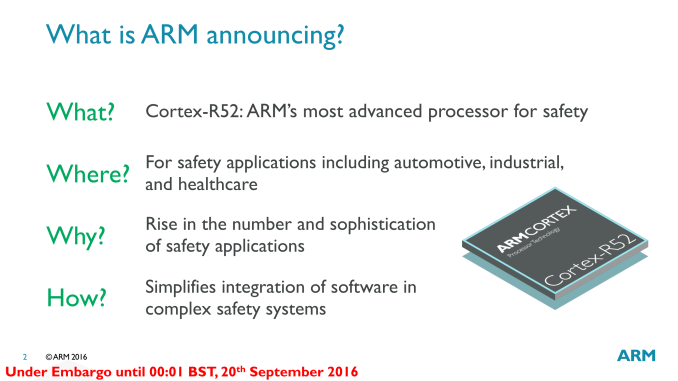

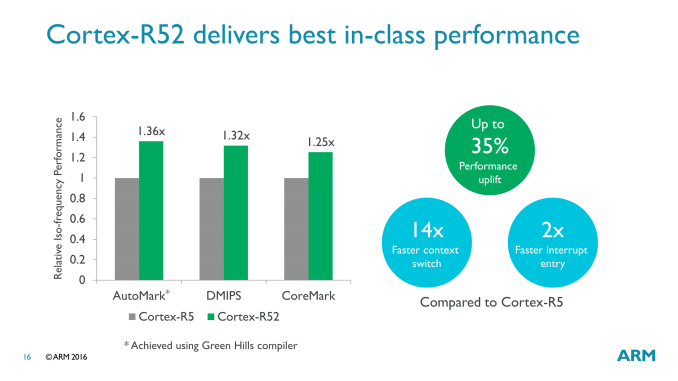

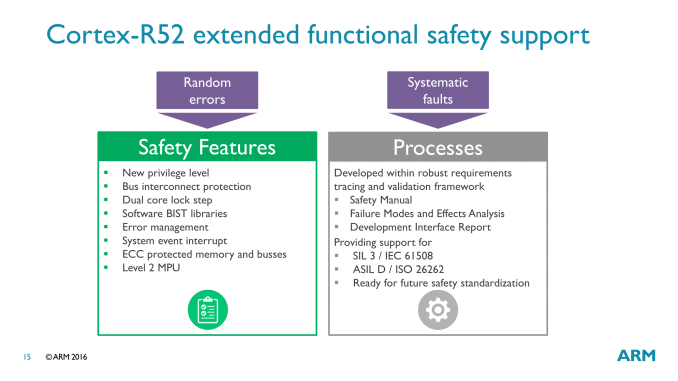
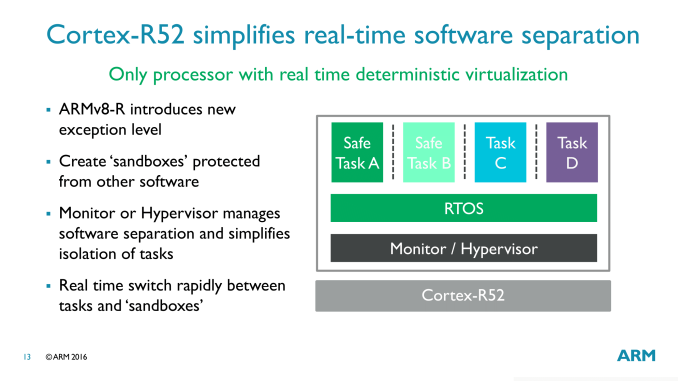
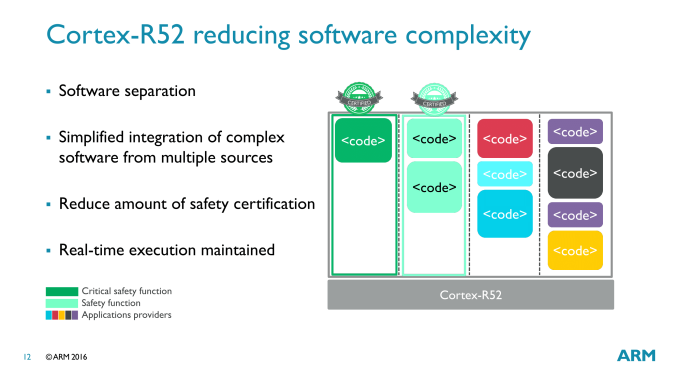
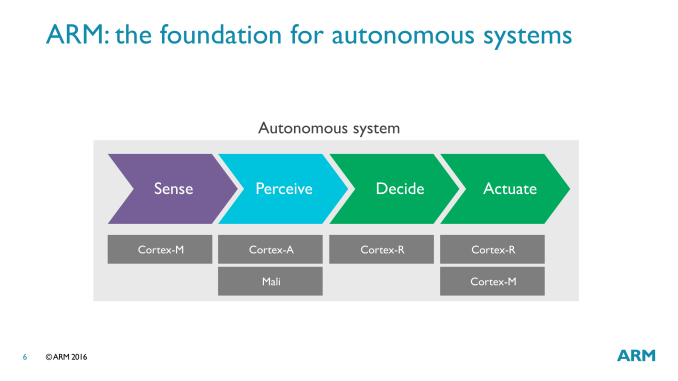
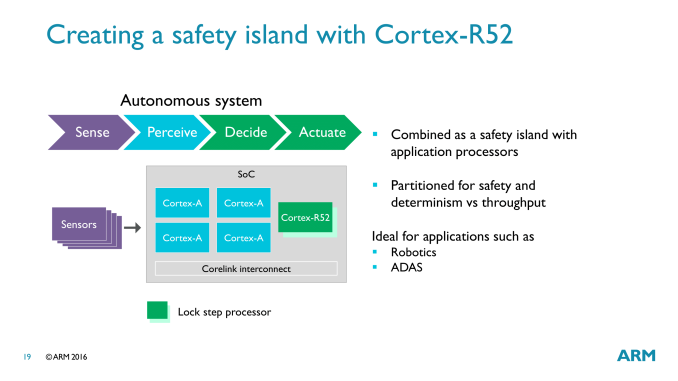

 Quote
Quote

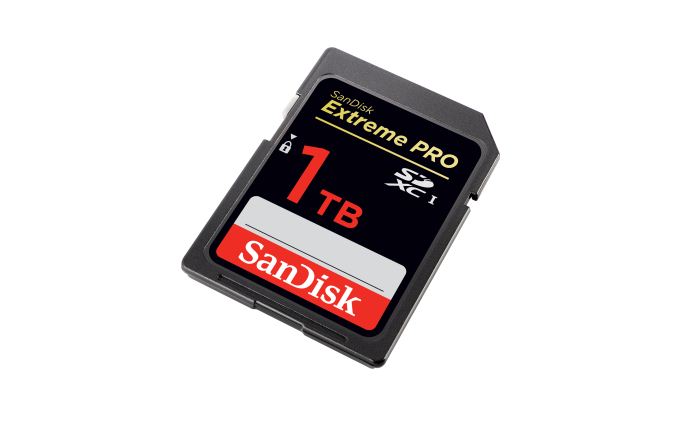

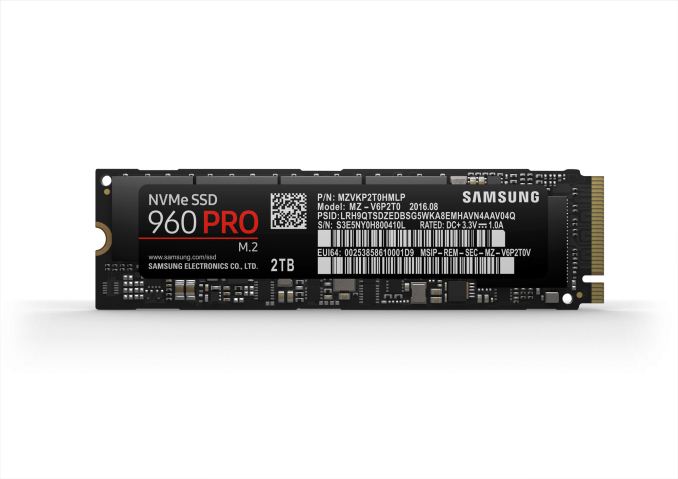
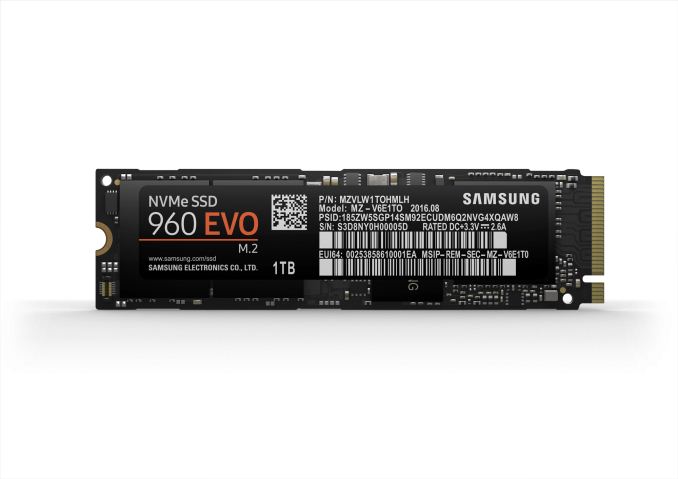

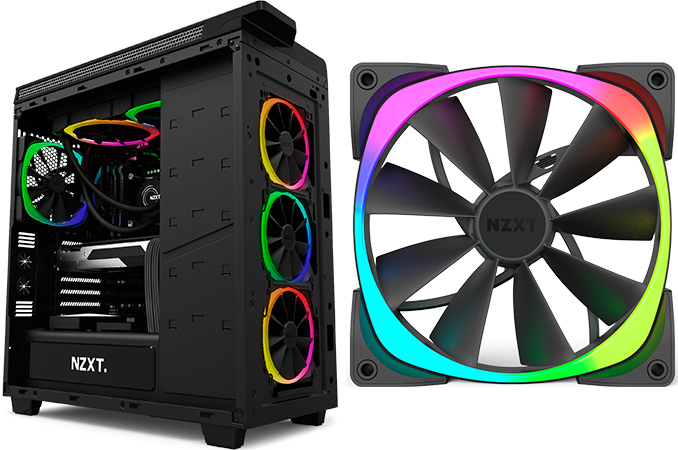



















Bookmarks